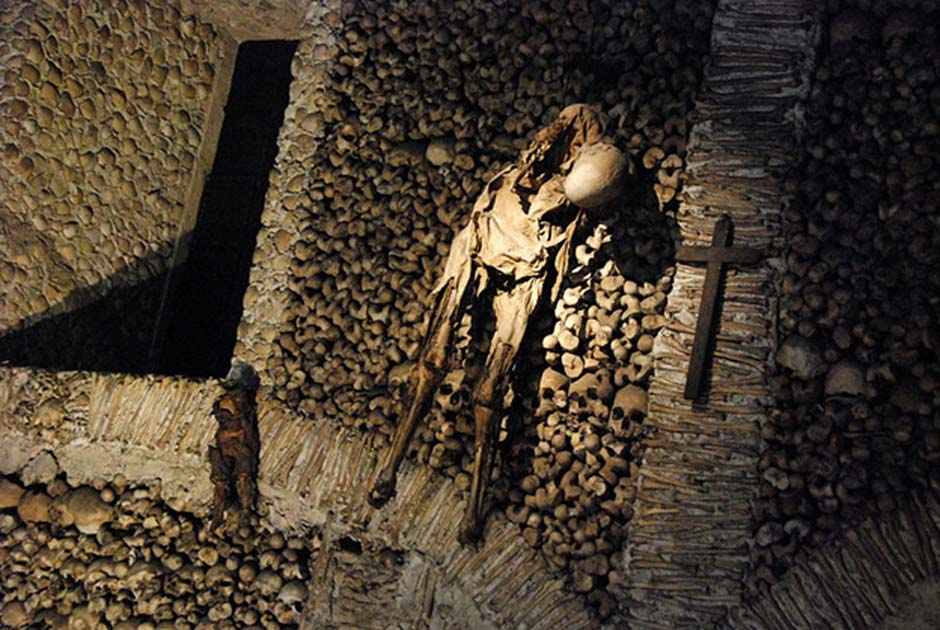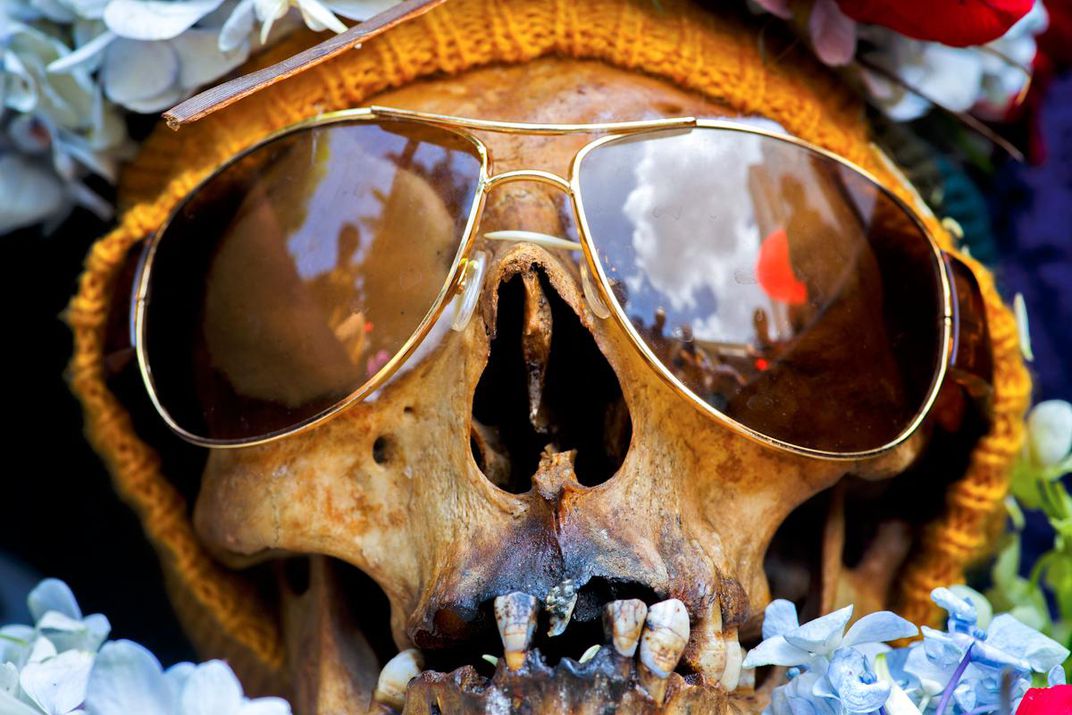An ossuary is a box, building, well, or site made to serve as the final resting place of human skeletal remains. They are frequently used where burial space is scarce. The greatly reduced space taken up by an ossuary means that it is possible to store the remains of many more people in a single tomb than if the original coffins were left as is.
- Skull Chapel (Czermna, Poland)
The Skull Chapel was built in 1776 by the Czech local parish priest Wacław Tomaszek. The chapel is the mass grave of people who died during the Thirty Years’ War (1618–1648), three Silesian Wars (1740–1763), as well as of people who died different diseases. The walls of the chapel are filled with 3, 000 skulls, and there are also bones of another estimated 21, 000 people in the basement.
- San Bernardino alle Ossa (Milan, Italy)
In 1210, when a nearby cemetery ran out of space, a room was built to hold the bones collected from the cemetery. A church was attached in 1269. Renovated in 1679, it was destroyed by a fire in 1712.
- Brno Ossuary (Brno, Czech Republic)
The Brno Ossuary was founded in the 17th century, and was expanded in the 18th century. It is estimated that the ossuary holds the remains of over 50, 000 people which makes it the second-largest ossuary in Europe, after the Catacombs of Paris.

- Capela dos Ossos (Evora, Portugal)
The Capela dos Ossos was built in the 16th century by a Franciscan monk. The number of skeletons of monks was calculated to be about 5, 000, coming from the cemeteries that were situated inside several dozen churches.
- Bonehouse (Hallstatt, Austria)
The Hallstatt collection of painted skulls represents a unique treasure for anthropologists who study the heritability of the cranial traits. The skulls are accompanied by fairly complete records of births, deaths and marriages dating back to the 17th century and kept by the Catholic Church. This makes the skull collection an ideal resource for genetic studies.
- Skull Tower of Niš (Serbia)
The ten-foot high Skull Tower contains 952 Serbian skulls embedded on four sides in fourteen rows.
- Santa Maria della Concezione dei Cappuccini (Rome, Italy)
The ossuary contains the remains of 4, 000 friars buried between 1500 and 1870, during which time the Roman Catholic Church permitted burial in and under churches.
- San Francisco Monastery (Peru)
It is estimated that 25, 000 bodies were laid to rest there.
- The Golden Chamber of the Basilica of St. Ursula (Cologne, Germany)
The Basilica church of St. Ursula was built upon the ancient ruins of a Roman cemetery, where the 11, 000 virgins associated with the legend of Saint Ursula are said to have been buried. The church has an impressive reliquary created from the bones of the former occupants of the cemetery.
- The Catacombs of Paris (Paris, France)
The origin of the Paris Catacombs, which it would be better to call «Municipal Ossuary», goes back to the end of the 18th century. The ossuaries hold the remains of about 6-7 million Parisians transferred there gradually between the late eighteenth and mid-nineteenth centuries as graveyards were being closed because of the risk they posed to public health.



